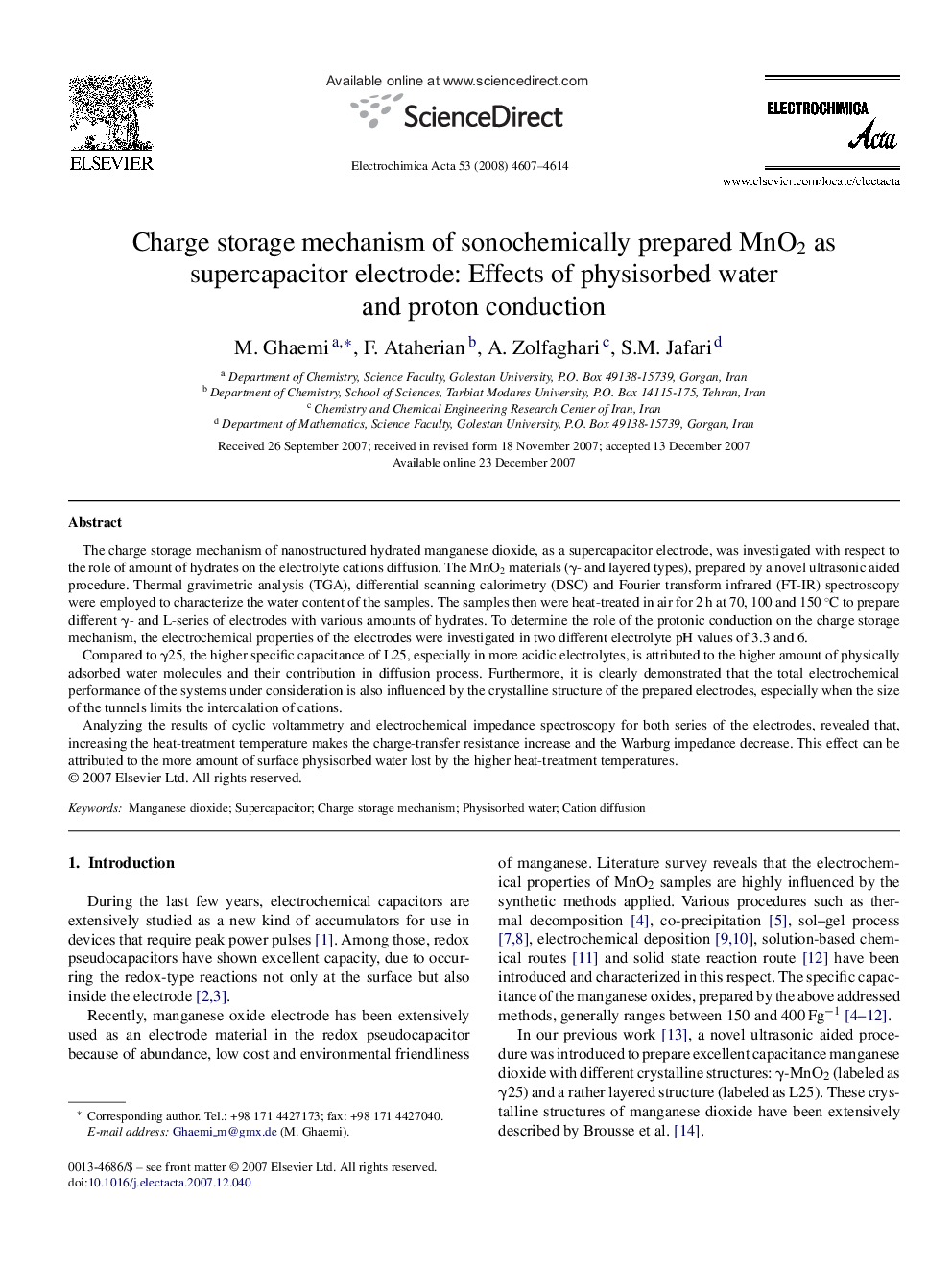| Article ID | Journal | Published Year | Pages | File Type |
|---|---|---|---|---|
| 192838 | Electrochimica Acta | 2008 | 8 Pages |
The charge storage mechanism of nanostructured hydrated manganese dioxide, as a supercapacitor electrode, was investigated with respect to the role of amount of hydrates on the electrolyte cations diffusion. The MnO2 materials (γ- and layered types), prepared by a novel ultrasonic aided procedure. Thermal gravimetric analysis (TGA), differential scanning calorimetry (DSC) and Fourier transform infrared (FT-IR) spectroscopy were employed to characterize the water content of the samples. The samples then were heat-treated in air for 2 h at 70, 100 and 150 °C to prepare different γ- and L-series of electrodes with various amounts of hydrates. To determine the role of the protonic conduction on the charge storage mechanism, the electrochemical properties of the electrodes were investigated in two different electrolyte pH values of 3.3 and 6.Compared to γ25, the higher specific capacitance of L25, especially in more acidic electrolytes, is attributed to the higher amount of physically adsorbed water molecules and their contribution in diffusion process. Furthermore, it is clearly demonstrated that the total electrochemical performance of the systems under consideration is also influenced by the crystalline structure of the prepared electrodes, especially when the size of the tunnels limits the intercalation of cations.Analyzing the results of cyclic voltammetry and electrochemical impedance spectroscopy for both series of the electrodes, revealed that, increasing the heat-treatment temperature makes the charge-transfer resistance increase and the Warburg impedance decrease. This effect can be attributed to the more amount of surface physisorbed water lost by the higher heat-treatment temperatures.
